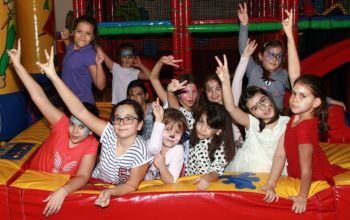Student Learning Goals
 Student Learning Goals
Student Learning Goals
This post is seventh of a series based on excepts from my book on Student-Engaged Assessment: Strategies to Empower All Learners by Laura Greenstein and Mary Ann Burke (2020). You can purchase the book from Roman and Littlefield for charts, examples, and worksheets on how to engage students to become owners of their learning successes.
Sample Student’s Learning Goals and Assessment Plan
Students can personalize their learning goals to make them more relevant, achievable, and interesting. The chart below illustrates how Davi, a second-grade student, personalized his learning goals and plan in each of his subject areas. These goals combine his understanding of what he needs to learn at his grade level as well as his specific interests. As appropriate, this may start with peer feedback. Then Davi meets with his teacher to discuss his progress and in due course, with his parents at student-parent conferences. He continues to modify and revise his goals for each cycle after receiving feedback.
| Content Area Standards | Student’s Personal Learning Goal
|
Assessment Plan |
| Language Arts:
CCSS: A Lexile represents the complexity of the text and individual reading ability. (CCSS Appendix) |
I will continue to read 300-500 Lexile level books for 20 minutes each night at home. My goal is to be reading 450 to 650 level by April.
I am learning how to write stories about people. I want to describe what my family looks like, how they act, and what they are thinking as compared to my family’s ancestors. |
I will maintain a record of the Lexile levels of the books I am reading. With my teacher, I will make sure the numbers are getting bigger. |
| Math: CCSS.2.oa.a.1 Solve one and two-step word problems: adding to and taking from. |
I will continue to do my math homework; I will also complete a word problem every day at home in my workbook. My parents try to help, but I still need more help from my teacher. | I’ll show the teacher my work, and when I get stuck, she can help me figure out what I didn’t understand and what to do next. |
| Social Studies:
Examine and identify cultural differences within the community. |
I am creating a family history book with pictures, drawings, and stories about my ancestors and how they lived compared to how my family lives today. I got pictures of my family and ancestors. I have written a story about the farm that my mother’s parents lived on when she was a little girl and put them in together in my family history book. | I’ll ask my peers to use the success criteria for my sequence, design, neatness, and clarity and give me feedback on how well I am doing with my family history book. |
| Science:
NGSS 2-LS2-1 Investigate water and sunlight to see what plants need to grow. |
I am learning how to create a garden plan and determine how much water and sunlight plants need. I am sketching vegetable growth each week when I work in the garden. I have a journal for my notes and sketches. The tomatoes did not blossom because it was too cold. The zucchini plants are growing zucchinis that are 10 inches long. They like the foggy fall weather. | I will note what worked and what didn’t and make specific suggestions for the next growing season. |
| Nutrition and Physical Activity | I will walk around the block at my home twice each day after school. I want to aim for three loops in the same time period.
I will eat a nutritious breakfast each day before school. I will be able to explain what is contained in a nutritious breakfast and compare my food choices. |
I will use a fitness tracker to record my laps and speed and look for improvement. I’ll focus on reduced fat milk, whole grains, lean meats, and fruits. |
| Other: Performing Arts | I will continue practicing how to draw animals by copying from a book. I will watch a YouTube video each week that shows me how to draw a different animal. I will then get feedback on my art. | I will put all my drawings in order and ask the teacher in what ways they have improved or could be better. |
| Other: Spanish | I will practice talking to my family in Spanish for 5 minutes each day. I hope to listen to some online kids’ language tutorials. I have started recording my new words. | At dinner, we talk about the food in Spanish and look up ones we don’t know. I am illustrating my own Spanish food dictionary. |
| Behavior: Manage Emotions | I will keep a star chart at home in managing my emotions when I am angry or frustrated. I am learning how to go to my room and calm down. I’ll ask my friend about the deep breathing and mindset exercises he learned. | Wow, belly breathing really works to calm me down. Maybe I will do yoga. |
Engaging Challenged Students
Everyone has times that they are focused on faraway thoughts or looming problems, only to snap back to the present, unaware of what’s been going on in the here and now. Students too, may be sitting in your classrooms, eyes open and heads forward, while worrying about a family member who is ill or daydreaming about an upcoming trip.
There’s a difference between being present and being engaged. For students who have social, emotional, or learning difficulties, learning how not to be noticed can be a priority. These students may get passed on to the next grade or level because they do not have behavioral problems, but are rather quiet and compliant learners. By the time they get to high schools, they can be several grade levels behind.
How to Check for Student Understanding
On behalf of those quiet and compliant learners, it is even more important to check for understanding as a camouflaged lack of comprehension can lead to disengagement. Other causes of low engagement are developmental difficulties, struggles with self-regulation, and social/emotional hurdles. Individual attention spans are only a few minutes long and may be influenced by a student’s interest, activity level, setting/location, or assigned group. Use strategies such as these to keep students engaged:
- Ask questions that require deeper and higher thinking.
- Have students tell a partner what they just learned.
- Add movement to learning such as signals for agree/disagree, or sure/unsure.
- Ask students for periodic summaries and recaps: These can be submitted as individual check-in slips or collaborative summaries.
Our January 4th post will explain how students assess their learning outcomes. For more charts, examples, and worksheets on how to engage students to own their learning, you can purchase Student-Engaged Assessment: Strategies to Empower All Learners by Laura Greenstein and Mary Ann Burke (2020) from Roman and Littlefield.
 How to Parent Today’s Kids for Success
How to Parent Today’s Kids for Success  Engaging Our Children in Daily Assignment Assessments
Engaging Our Children in Daily Assignment Assessments Student Leaders Seek Program Development
Student Leaders Seek Program Development with Your Children
with Your Children